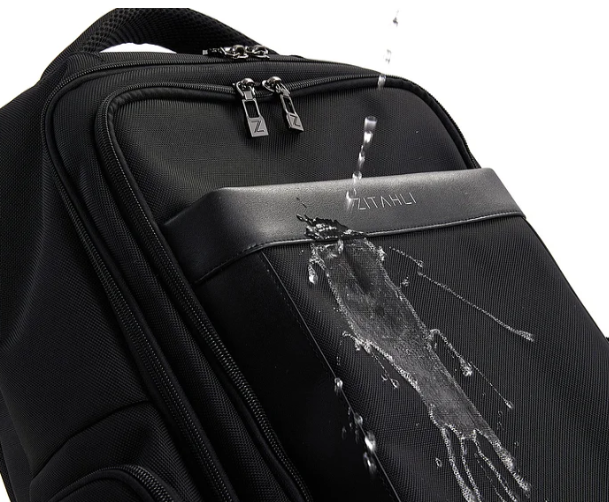In today’s world, laptops are essential tools for both work and leisure, which makes protecting them a top priority. Whether you’re commuting to the office, traveling for business, or simply navigating unpredictable weather, a waterproof laptop bag can be your best defense against potential damage.
But what makes a waterproof laptop bag truly effective? Understanding the science behind the materials and design innovations can help you make an informed decision when choosing the right bag laptop for your needs.
The Role of Waterproof Materials
At the heart of any waterproof laptop bag lies the material used to create it. Traditionally, fabrics like nylon and polyester are favored for their durability and water-resistant properties. However, the term “waterproof” goes beyond just using these basic fabrics. High-quality waterproof laptop bags often incorporate advanced coatings and laminations that enhance the fabric’s ability to repel water.
PU and PVC Coatings
Polyurethane (PU) and Polyvinyl Chloride (PVC) coatings are two of the most commonly used treatments in waterproof laptop bags. These coatings create a protective barrier on the fabric’s surface, preventing water from penetrating through to the inner compartments.
PU is lightweight and flexible, making it an ideal choice for commuters and those who need a bag that won’t feel bulky. On the other hand, PVC is heavier but offers excellent resistance to extreme weather conditions, ensuring that your laptop stays dry even in a downpour.
DWR Finishes
Durable Water Repellent (DWR) finishes are another key innovation used in the construction of waterproof laptop bags. DWR is a chemical treatment applied to the outer fabric that causes water to bead up and roll off, rather than soak in. This treatment is commonly found in high-end bags designed for outdoor use, where exposure to rain and moisture is frequent.
It’s important to note, however, that DWR finishes can wear off over time, so periodic reapplication might be necessary to maintain the bag’s waterproof properties.
Innovative Design Features
Beyond the materials, the design of waterproof laptop bags plays a crucial role in their ability to protect your device. Many brands incorporate specific design elements aimed at enhancing the bag’s water resistance and ensuring that water cannot seep into crucial areas.
Sealed Seams and Zippers
While waterproof materials are essential, even the most water-resistant fabric won’t protect your laptop if the seams or zippers are vulnerable. Sealed or taped seams are a common design feature in high-quality waterproof bags. These seams are treated to ensure that water doesn’t enter through the tiny holes left by stitching.
Similarly, waterproof zippers are designed with a layer of rubber or other waterproof material to prevent water from slipping through the zipper’s teeth. Some bags use storm flaps—additional fabric layers over the zipper—to offer further protection.
Roll-Top Closures
One of the most innovative designs in waterproof laptop bags is the roll-top closure. Roll-top closures eliminate the need for traditional zippers at the top of the bag, which can be a common entry point for water. Instead, the user rolls down the top of the bag and secures it with a buckle or Velcro strap. This creates a tight seal, making it almost impossible for water to enter.
Roll-top closures are often seen in outdoor or adventure-style laptop bags, as they offer superior protection in extreme conditions such as heavy rain or water exposure during activities like kayaking or hiking.
Breathable Waterproof Fabrics
An emerging innovation in waterproof laptop bag design is the use of breathable fabrics. While most waterproof materials are excellent at keeping water out, they can also trap heat and moisture inside the bag, leading to humidity and potential damage to electronic devices.
To combat this, some manufacturers have developed breathable yet waterproof fabrics that allow heat and moisture to escape while keeping water out.
These fabrics often feature a microporous membrane that blocks water droplets but allows smaller particles, such as air and water vapor, to pass through. This helps to prevent condensation from building up inside the bag, keeping your laptop safe from internal moisture damage.
Conclusion
Waterproof laptop bags have come a long way thanks to advancements in both materials and design. From cutting-edge fabrics like PU and PVC coatings to innovative features such as sealed seams, waterproof zippers, and roll-top closures, the science behind these bags ensures your laptop stays protected no matter the weather.
Choosing the right bags laptop that fits your needs involves understanding these key innovations.
Whether you’re a frequent traveler, a daily commuter, or someone who simply wants peace of mind when carrying your laptop, investing in a well-designed waterproof bag is a smart decision. With the right combination of material and design, you can protect your valuable device from the elements while maintaining both style and functionality.


